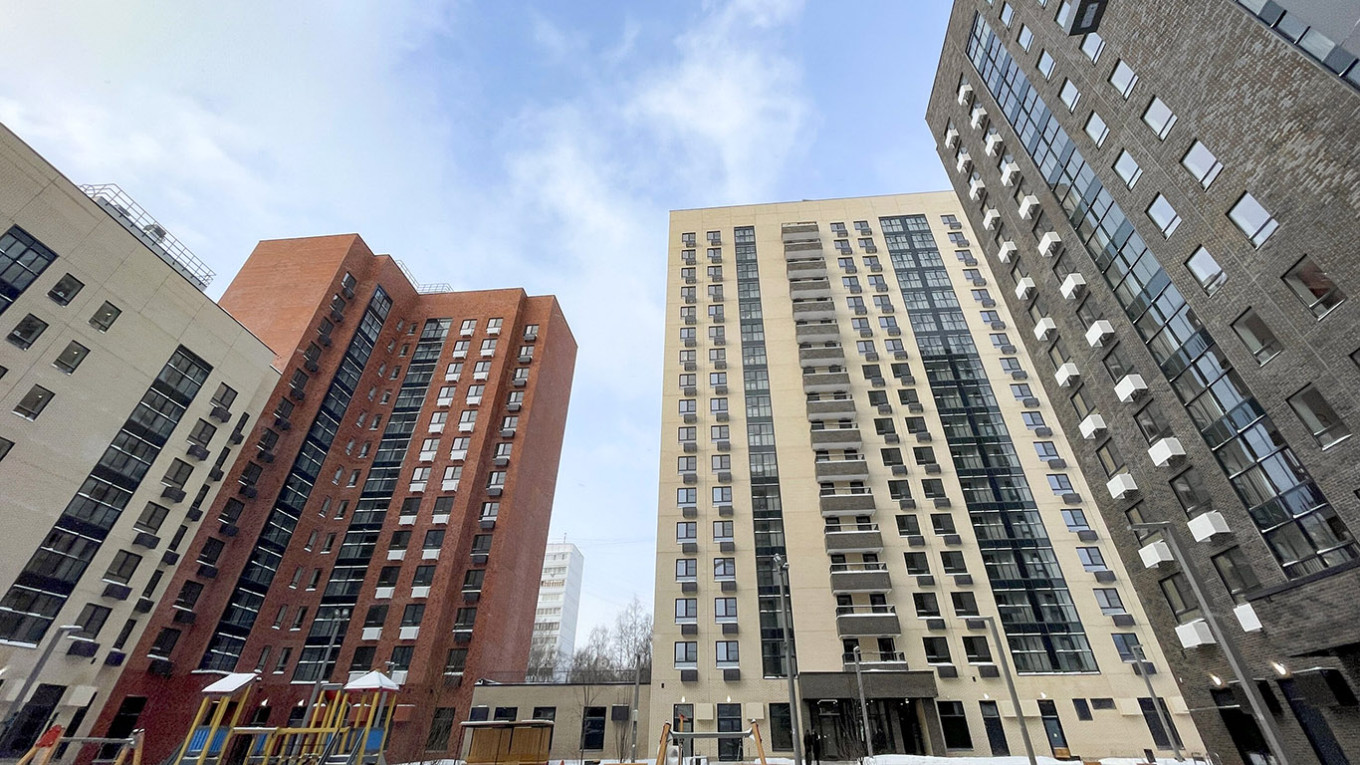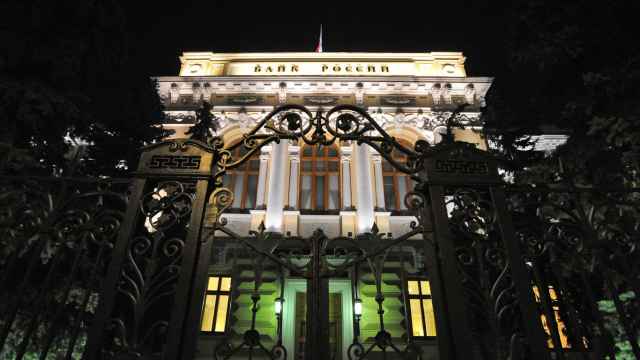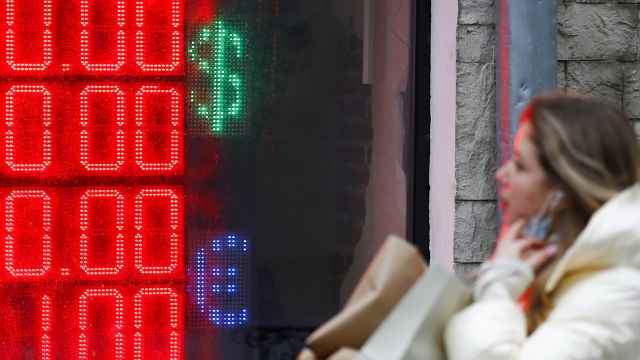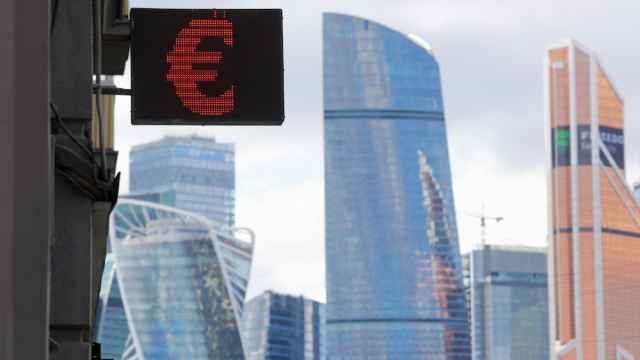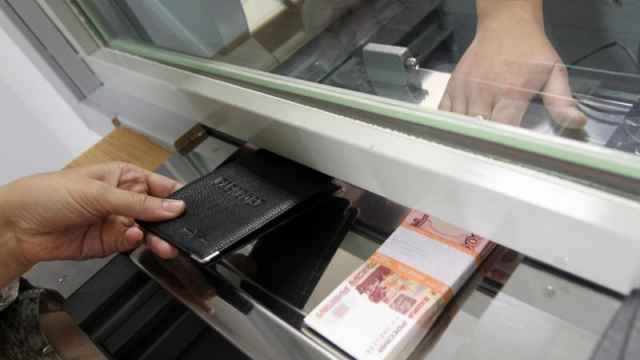Russia’s real estate market is being rocked by the end of the generous mortgage subsidy program that has been running for years and was used by the Kremlin to stimulate the economy since the start of the sanctions regime.
In July the government ended the scheme that kept mortgage rates at 8% since its introduction in 2020 at a time when the Russian Central Bank (CBR)’s prime rate has climbed to 19% and is expected to rise further.
The low borrowing rates caused a boom in the real estate and construction sector that helped maintain employment and boosted economic growth which became even more important after the West imposed the extreme sanctions regime on Russia following the invasion of Ukraine in 2022.
However, the booming housing market also contributed to rising inflation which peaked at over 9.1% in July, although it fell off in September to 8.6% as the CBR’s high interest rates began to have an effect and the Russian economy cooled as the military Keynesianism effects begin to wear off. Nevertheless, the CBR is widely expected to hike rates by another 100bp at the next monetary policy meeting at the end of October.
As inflation is not being driven by traditional money supply problems, but rather by heavy military spending that has been overheating the economy, the CBR teamed up with the government to introduce non-monetary policy methods to cool the economy, starting with ending the mortgage subsidy in a major change of direction: the regulator has switched from policies to support growth in the face of sanctions, to tackling head on the high inflation rates, which have become a major headache. As a result of this change in a pessimistic medium-term forecast, the CBR predicted that both growth and consumption will fall sharply in 2025.
House market hit
Russia’s real estate market is undergoing a significant upheaval as a result of the changes. After an initial rush to sign up for the program before the expiration deadline, mortgage issues halved in July as borrowing costs jumped. Construction companies have stepped into the breach to soften the blow by offering their own flexible subsidies with schemes similar to the subprime deals in the U.S.: preferential rates for the early stage of the loan that increase to market rates after a few years, on the assumption that rates will fall in the future. However, analysts point out that if rates don’t fall then the companies are setting themselves up for a major financial crisis several years down the road.
In the meantime, rental prices are already soaring to take account of the new realities and have created a "perfect storm" for housing affordability. The abolition of non-targeted preferential mortgage schemes and the increase in loan rates have pushed housing beyond the reach of many, while rental costs have surged across the country. The one exception where subsidies are still available is with the “family mortgage” for families with more than three children as part of the Kremlin’s ongoing efforts to counter Russia’s demographic problems.
Initially intended as a temporary measure, the scheme played a crucial role in the market, accounting for more than a quarter of all mortgage loans in 2023. By the first quarter of 2023, preferential mortgage schemes accounted for 70% of mortgage loans, and a staggering 96% of loans for new builds, The Bell reported. Over four years, the state spent approximately 600 billion rubles ($6.2 billion) subsidizing these loans.
The termination of the program has exposed deep imbalances in the real estate market. The scheme fuelled rapid price increases in new-build properties, widening the price gap with the secondary housing market. The mortgage market overheated, with some individuals exploiting state support—one borrower managed to secure 26 mortgages for nearly 200 million rubles, The Bell reported, although the default rate has always been low, propped up by the current record levels of real disposable income that has created a war middle class. Sberbank reported that 85% of participants in the preferential scheme by the end of the program were high-income earners, particularly in Moscow, where salaries exceeded 158,000 rubles ($1,643) per month, twice the national average. On the whole, incomes have been rising fast in the last two years, but Russia remains riven by high income inequality and the rising interest rates will make homeownership beyond the reach of millions of people.
For those not eligible for preferential rates, housing affordability has plummeted. Alexander Isakov of Bloomberg Economics calculates that, from April 2020 to September 2024, the average price per square meter in new buildings surged by 122%, making homeownership increasingly unattainable.
High interest rates drive down affordability
Russia is now facing a housing affordability crisis which will compound the coming economic slowdown in 2025. By September 2024, housing affordability had fallen by 60% compared to March 2020. The decline was largely driven by rising mortgage rates, which skyrocketed after the government stopped subsidizing loans.
“After the state stopped subsidizing the difference between the preferential rate and the market rate, borrowers without access to state support were left with mortgage offers at almost 20% — a prohibitive level,” Isakov explained, as cited by The Bell.
Tied to the Central Bank’s key rate of 19%, the average mortgage rate across Russia’s largest banks is now over 22%, with the CBR intending to lift the remaining limits on the full cost of loans by March 2025. September saw a sharp 57% drop in mortgage issuance for new builds, according to Central Bank data.
Demand for new-build apartments has also collapsed, with Dom.RF reporting a two-month decline by August, leaving demand 30% lower than the first half of 2024, The Bell reported.
The cost of borrowing increases causing the housing crisis is being compounded by the sky-high inflation which is adding to construction costs. That is being made even worse by the chronic labor crisis due firstly to the drain on the labor force by military service but also new anti-immigrant laws following a backlash against economic migrants from the so-called Near Abroad following the March 22 terrorist attack on Crocus City Hall that left over 140 dead, perpetrated by Tajik extremists. In addition, the Kremlin is making it harder for migrants to get work permits in an effort to goad more migrants, especially from Central Asia many of whom work in the construction sector, to take advantage of the simplified naturalization process to provide more recruits for the war in Ukraine, according to reports. Construction costs have risen throughout 2024, with prices for materials, equipment and labor pushing up housing prices.
One beneficial effect of the cancellation of the non-targeted mortgage program is that it has popped the bubble of a mushrooming housing bubble and slowed the rise in new-build prices. Dom.RF reported that prices increased by just 0.1% in August, the smallest monthly change since March 2023, while Sberindex recorded a 0.63% drop in September, The Bell reported. However, experts say that it's too soon to call these changes a trend.
Although the non-targeted program has ended, other preferential schemes remain in place covering important socioeconomic groups: in addition to families with lots of children, IT specialists and residents of rural areas or in the underpopulated Far East have been singled out for preferential mortgage rates. But these programs are also in the crosshairs and may be wound down soon.
The state-owned Russian Agricultural Bank and retail banking giant Sberbank recently suspended applications for rural and IT mortgages due to funding limits. Even family mortgage schemes, which allow for loans at 6% for families with children under six, may face cuts as the high key rate forces a re-evaluation of terms later this year.
Rental market madness
The changes to homeownership are already having a knock-on effect on the rental market, which has also seen significant price hikes. In some regions, rents for one-bedroom apartments have risen by 10% to 61% since August. Moscow and St. Petersburg saw sharp increases, with rents up 44% and 43% respectively, according to CIAN data. The average rent for a one-bedroom apartment now stands at 68,200 rubles ($709) in Moscow, the equivalent to the average national monthly salary, and 45,800 rubles ($476) in St. Petersburg.
The end of preferential mortgage rates will drive many families to rent rather than buy, further straining the rental market, which has seen a sharp decline in supply. Dom.RF reported a significant reduction in available rental properties in 2023, and experts expect rental prices to continue rising throughout the autumn ahead of expected falls in real income in 2025 that could turn into a cost-of-living crisis in Russia.
For those who have not already bought an apartment during the subsidies scheme, with both the mortgage and rental markets becoming increasingly expensive, Russian consumers will face a much harder time securing affordable housing starting in 2025.
This article was originally published by bne IntelliNews.
A Message from The Moscow Times:
Dear readers,
We are facing unprecedented challenges. Russia's Prosecutor General's Office has designated The Moscow Times as an "undesirable" organization, criminalizing our work and putting our staff at risk of prosecution. This follows our earlier unjust labeling as a "foreign agent."
These actions are direct attempts to silence independent journalism in Russia. The authorities claim our work "discredits the decisions of the Russian leadership." We see things differently: we strive to provide accurate, unbiased reporting on Russia.
We, the journalists of The Moscow Times, refuse to be silenced. But to continue our work, we need your help.
Your support, no matter how small, makes a world of difference. If you can, please support us monthly starting from just $2. It's quick to set up, and every contribution makes a significant impact.
By supporting The Moscow Times, you're defending open, independent journalism in the face of repression. Thank you for standing with us.
Remind me later.



